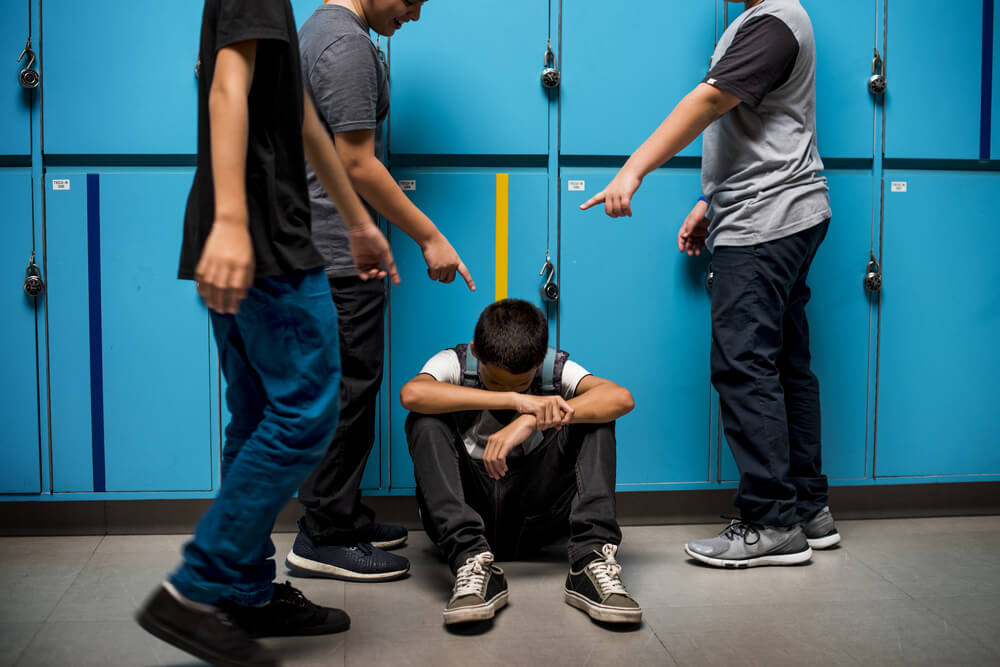5 Activities to Prevent Bullying at School

Bullying requires action and commitment from everyone, as no one comes out of an environment where bullying reigns unscathed. Therefore, in the following article, we’ll take a look at some activities to prevent bullying in schools.
Bullying is a situation that “simmers”. It’s not an occasional and isolated type of harassment, nor is it something that happens overnight. On the contrary, it involves successive harassment of the victim, annoyances that are repeated day after day and under diverse modalities. Sometimes verbal, sometimes physical, sometimes both.
That’s why when its consequences become visible – sometimes in the worst way – few people are surprised. In fact, many saw it, others were accomplices, and some tried to do something, which turned out to be insufficient.
What is bullying?
Bullying is a situation of sustained harassment and bullying carried out by one or more people against another. It usually occurs in school, sports, or social environments and causes great suffering to those who experience it.
When the subject of bullying is addressed, many people consider it to be a matter between two people: The victim and the victimizer. But this isn’t so, because the entire educational community is affected, either by action or omission, by being witnesses and accomplices, or by being participants.
You may be interested in: 9 Questions About Bullying and Their Answers

School activities to prevent bullying
Below, we’ll present some strategies or activities to address the problem of bullying at school and prevent further occurrences.
1. Use examples where diversity is valued and appreciated in all its senses
This can be achieved in a variety of simple ways. For example, by showing students images of different bodies, ethnicities, types of families, functionalities, among others.
This way, children are taught that there are other realities different from their own and we try to leave aside stereotypes and universal and hegemonic beauty standards as if they were ideal.
2. Use stories or films, depending on the age of the students
Through other stories, it’s possible to indirectly address some everyday situations of bullying. It’s important to accompany this material with a space to reflect on emotions, to know how children feel when faced with certain scenarios.
3. Develop a code of coexistence
A brainstorming session can be carried out with all the students about those norms and rules that contribute to the harmony of the group on a daily basis.
When finished, you can draw up a “contract” that everyone signs and by means of which they commit to comply with and respect the guidelines for coexistence. If many ideas arise, they should choose some of them, thus teaching communication and negotiation skills.
4. Promote activities in rotating groups
With these proposals, group members are encouraged to get to know each other. You can also invite them to share something personal, such as their favorite hobby. Many times, through socializing experiences, children discover that they have more similarities with others than they think.
5. Design activities that work on emotional intelligence
Schools can0t be an “aseptic” environment where only knowledge is transferred because emotions are part of people’s lives and the value of empathy must be instilled from childhood.
One way to achieve this is to think of a day to “give to others”. For example, every Friday, a group of children should create an activity to surprise the rest of their classmates and to share a pleasant moment: A game to start the day, a song, or a delicious snack. This is a way to bring them closer, generate group cohesion, and help them enjoy time together.
Apart from these measures, it’s important that there are protocols to prevent bullying, with concrete consequences when it occurs. It’s crucial to take into account that punishment isn’t equivalent to learning. It’s a measure that serves in the short term to stop the problem, but it doesn’t modulate the behavior of those who carry it out.

You may be interested in: Why You Shouldn’t Bully Your Kids
Bullying is an issue for everyone
Sometimes, we underestimate the effects of bullying by justifying it as something that has always existed. But just because bullying and harassment have been around for a long time, doesn’t mean they’re right or should be normalized. In addition to this, we must stop thinking of bullying as a childhood issue or “something that will make them strong” to face the adversities of life.
Bullying tells us about shortcomings, lack of resources to relate to others, one’s own difficulties, etc. It has serious consequences, both for physical and mental health, in the victim and in the environment. Therefore, let’s stop thinking that bullying is something that only happens in the schoolyard because its harmful effects affect us all.
All cited sources were thoroughly reviewed by our team to ensure their quality, reliability, currency, and validity. The bibliography of this article was considered reliable and of academic or scientific accuracy.
- Cerezo, F. (2009). Bullying: análisis de la situación en las aulas españolas. International Journal of Psychology and Psychological Therapy, 9(3), 383-394.
- Paredes, M. T., Álvarez, M. C., Lega, L. I., & Vernon, A. (2008). Estudio exploratorio sobre el fenómeno del” Bullying” en la ciudad de Cali, Colombia. Revista Latinoamericana de Ciencias Sociales, niñez y juventud, 6(1), 295-317.
- Trautmann, A. (2008). Maltrato entre pares o” bullying”: Una visión actual. Revista chilena de pediatría, 79(1), 13-20.